- About
-
Discover
City Guides, Tour Guides, Insider's Guides
-
Experience
Book your next trip
-
Lab
Book the digital Experiences
-
Hidden Gems
Hotels. Restaurants, Bars
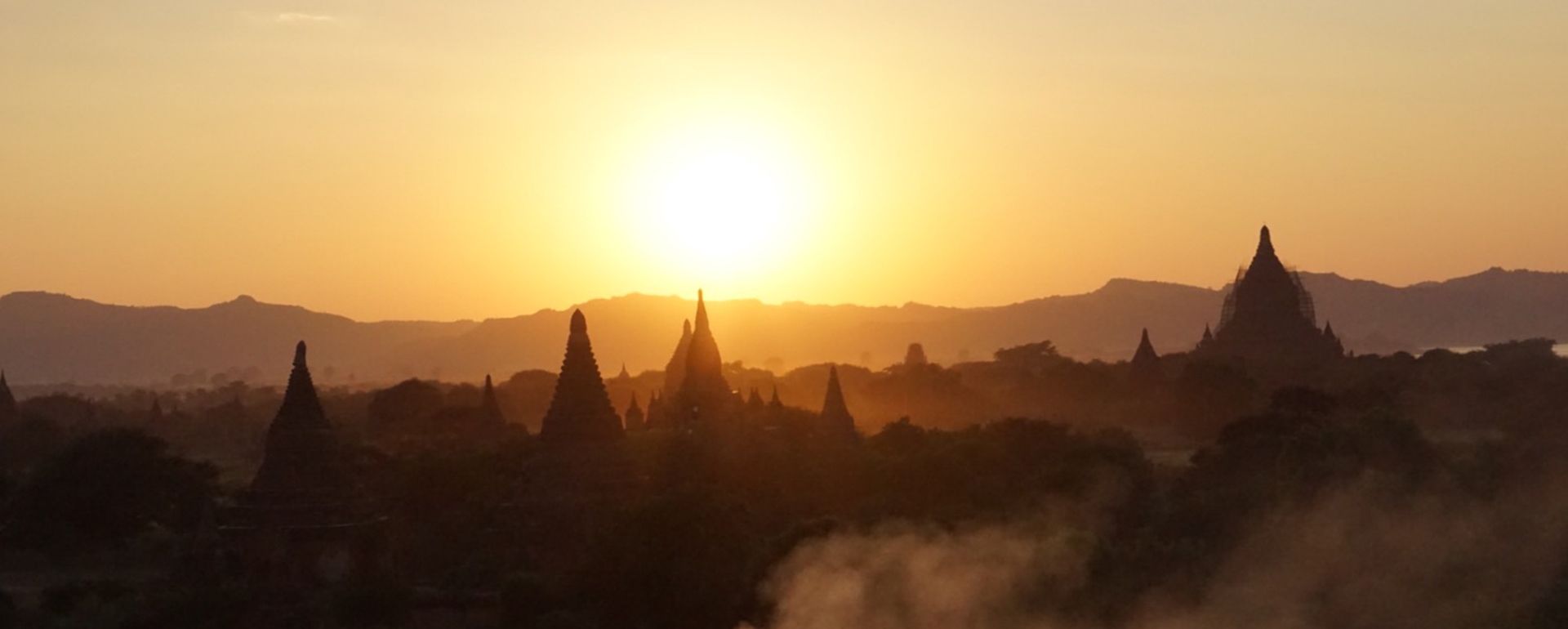
Editor: Elisa Carassai
Beautiful temples, lotus flowers, antique spiritual legends and breathtaking views of untouched nature: all you need to pack for your trip to Burma is a hefty dose of adventure.
After 50 years of brutal oppression, Myanmar has opened its doors to tourism. Because of its dark and stormy political past and because it is a country which has relatively been touched by mass tourism (the most popular kind of tourism in Myanmar is Asian pilgrimage), visitors are encouraged to explore the unique treasures of this country in the most idiosyncratic way. When to go? We advise to travel in the dry season, roughly November through February.
Every region has lived through so much, and you’ll be surprised by the number of stories behind each landmark. Littered with a myriad of golden pagodas, these religious buildings are scattered across its green land, where pilgrims and natives alike like to apply a patch of golden leaf as a sign of devotion. The spirituality of Myanmar is intrinsically rooted in every action of the locals and it is connected to its primal religion, Buddhism. The locals of Myanmar are said to be the most hospitable population in south-east Asia (we agree!), and their spirit of generosity and spirituality echoes all across the land, the real, true treasure of this land with differing facets. It is the locals which will show you the uniqueness of their traditions and of their land involving you in the process: starting from their beauty ritual involving a pale-gold facial cosmetic called thanaka, derived from the thanaka tree - which protects them from the sun’s rays and makes their skin look youthful.
Other than being a very spiritual land, the country is dedicated to the preservation of the arts and crafts. From lacquer making in Bagan, to the extraction of lotus flower fibers at the Inle lake, you’ll be witnessing a number of ancient traditions which have been preserved since the dawn of time. Travelling across cities is made easier through intercity flights, as Myanmar extends so much that it would take too long to board a bus or a train from city to city.
Everything starts in Yangon, the largest city in Myanmar. And in the land of a million pagodas, the golden stupa that however, still has a heart-stopping impact on everyone - from foreigners to locals alike - is the Shwedagon Pagoda. One of the wonders of the world, this structure of ninety-eight meters is covered with fourteen tons of gold, with a large diamond on top. Shrouded in a faint fog of incense, and drawing a crowd of worshippers who still outnumber tourists two to one (as mentioned before, ‘spiritual’ tourism is still the most popular kind of tourism in Myanmar) Shewadegon and its golden aura have become a symbol of pious and enduring people. It's this fact, as much as the millions in gold plate and jewels, that serves to make it a vision that remains burned into the memory as brightly as it shines at sunset - the best time to visit. Legend says that in the sixth century BC two brothers brought from India eight Buddha hairs to guard and placed them inside of the Pagoda as a special relic.
Where to stay in Yangon for a true otherworldly experience? The Strand Hotel is our number one pick, as it housed in a beautiful colonial building which was built at the start of the century, precisely in 1901. Two other places, we’d suggest staying at are the Belmond Governor’s Residence and Yangon Excelsior. The first one is located in Yangon’s leafy Embassy district, and mixes a post-colonial 1920s aesthetic with classical Burmese design. The second instead, is a more modern option and will be perfect for the ones who need and don’t want to give up luxury and comfort when away from home.
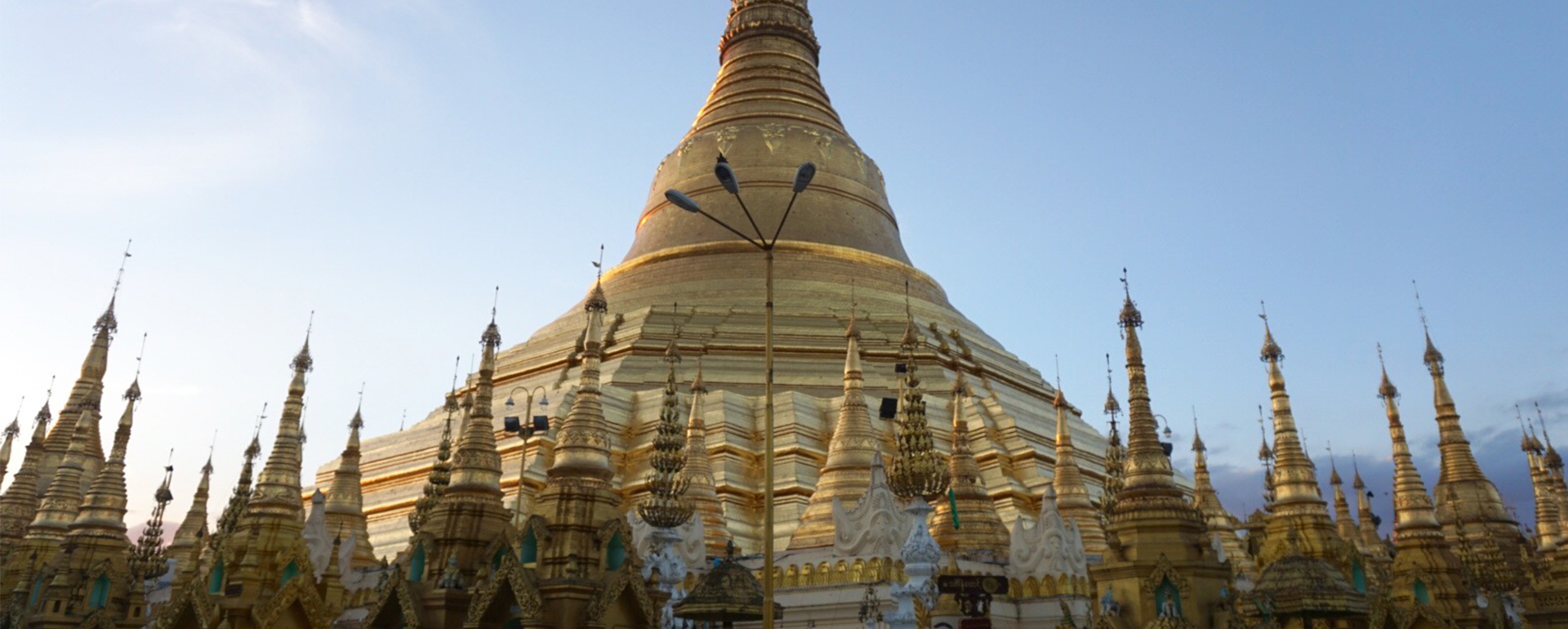
From Yangon, the next stop on the itinerary is Kyaiktiyo (Golden Rock) in the Mon state, approximately 160km away from Yangon. Along the way, there are a series of religious and cultural sites that can be helpful especially if you want to take a break from the travelling. First up is the reclining Buddha, also called Shwethalyaung, which is part of the Bago community. The Buddha is 66 metres long and one of the largest in Myanmar. Before heading to Golden Rock, make sure you visit a local market called Yadanar. The market is in proximity of the Golden Rock mountain and is also close to the Taukkan military cemetery, a cemetery for Allied soldiers from the British Commonwealth who died in battle in Burma during the Second World War.
Because you’ll be engrossed in all of the sights, tastes and smells, which can be intoxicating, make sure you visit it with a guide, as it is easy to get lost.
From here, reach Kimpun Camp, the starting point of the road that will take you to Kyaiktiyo Pagoda, also called the Golden Rock, a ginormous rock covered in gold leaf and precarily positioned on the edge of a cliff. Seemingly defying the law of gravity and although quite famous, surprisingly it is not as touristy as the other destinations in the country. The good thing is that the authenticity of the place is still preserved (unlike the temples in Thailand) and you'll see many more locals than foreigners around. The name Kyaiktiyo means "temple upon a hermit's head".
The legend says that Buddha himself offered a strand of his hair to the hermit called Thaik Tha. The hermit, in turn, decided it would be a good idea to notify the king about it and ask him to build a temple in order to enshrine the Buddha's hair. The king found a rock in the shape of the hermit's head at the bottom of the sea and transported it to the perfect location - where it is now. Only men are allowed close to the rock, to feel its magic. It is said that feeling the energy and paying tribute to the god will make sure you’ll be lucky all year round. To get to Golden Rock board a bus in the direction of Hermit Hill, which will take approximately 45 minutes.
Our tip is to go visit the rock early in the morning when the sun is rising, as you’ll see the sun rising over the rock. The hotel we suggest staying in this area is the Mountain Top Hotel, a cottage-style stay which overlooks the valley. The area doesn’t really offer other hotels with much comfort, but rather simple structures, however, Mountain Top Hotel is great because of its proximity to the Golden Rock.
Back in the direction of Yangon, board a plane in the direction of Bagan, which is known to be the antique capital of Burma and the Burmese culture. Bagan is an ancient city which is located in the Mandalay region of Burma and has been recently been appointed UNESCO World Heritage site. From the 9th to 13th centuries, the city was the capital of the Pagan Kingdom, the first kingdom that unified the regions that would later constitute modern Myanmar. It is also home to the largest and densest population of temples and pagodas in Burma. Across a land of 40 square meters, reigning rulers of the time built more than 13.000 temples of different sizes and shapes. Unfortunately, many of them were destroyed over time, so you can now visit only 2000. Although there are still many, we recommend booking a hot balloon air ride as it is justly regarded as the literal high spot of any tour. Leaving at dawn, after a champagne fueled breakfast, drift over the temples on this 45-minute ride, an unforgettable experience which provides an unbeatable view over the stupa-studded plains of Bagan. With the sound of morning prayer echoing up from these still-functioning temples, and gold-robed monks scurrying below, the experience feels spiritual even for the non-believer, basking in the hazy gold of the morning sun. We can certainly check that off our bucket list.
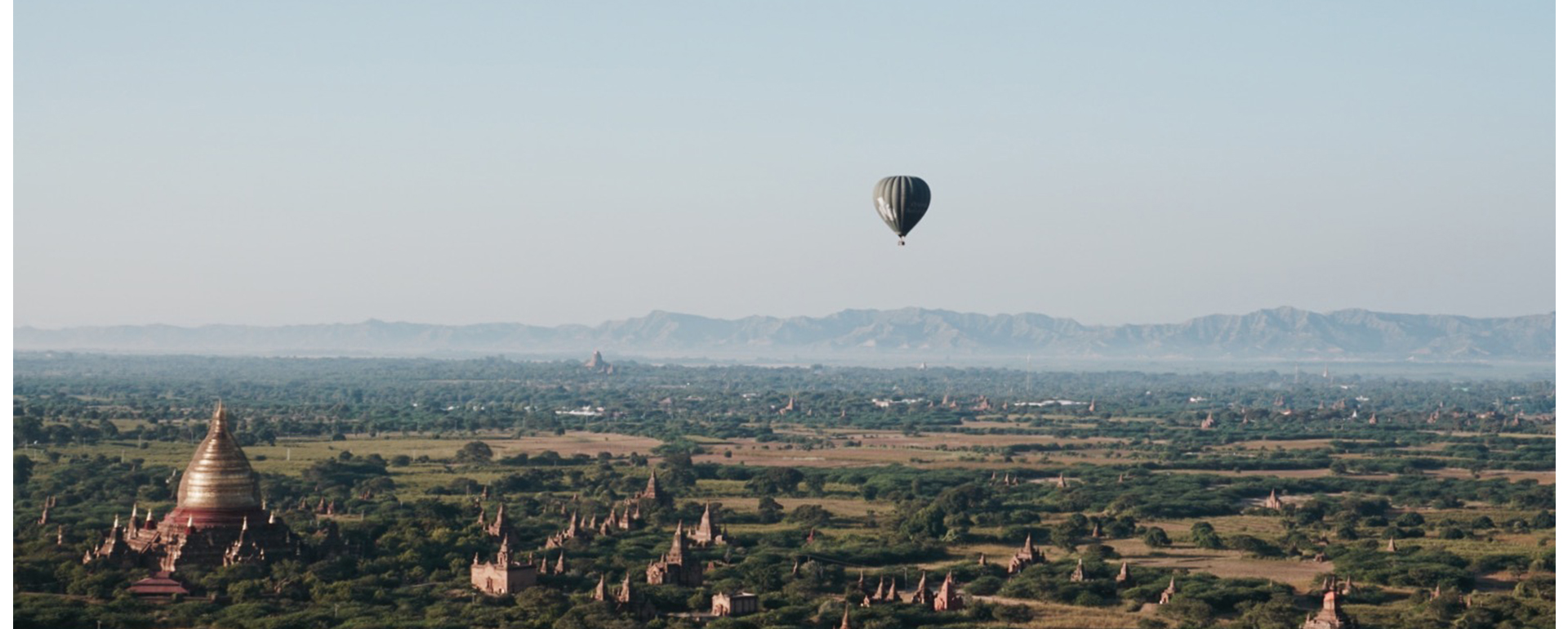
Must see in Bagan are the Shwezigon Pagoda and the Wetkyi-in Gubyakkyi Temple which is home to a series of painted murals which depict some Jakata scenes.
The Htilominlo is also a beautiful sight, notable for its chalk sculptures and the Gate of the City of Tharaba, which happens to be the oldest architectural example of the city of Bagan. As Bagan is also renown to be the capital lacquer-making, a visit to a lacquer-making objects factory is a must. This practice takes its roots in China and has been around for three thousand years, yet it was then developed in the rest of Southeast Asia. The Myinkaba Gubyaukkyi Temple, built in typical Mon style, is a beautiful sight to see, an idea of the vision of the life lived in the king’s prison. Another noteworthy sight to see is the Hindu Nanpaya Temple, which contains some of the first stone statues masterpieces. We suggest staying at the Aureum Palace, which has a beautiful view on the temples.
From Bagan head off to the airport, to take a flight in the direction of Mandalay, the capital city where the last ruling kind of Myanmar lived. It is 300km north-east of Bagan. Mandalay was the last capital of the Burmese kings before the British took full control of the country in 1885 and in the past, it was a place of horse-drawn carts, low-level industry and many monasteries. Thanks to Chinese investment, today it is booming. Yet it remains a low-rise city and retains a village-like atmosphere. As a manifestation of modern Burma, it is an absorbing place to visit because it is so go-ahead yet so traditional.
The Ancient Capital of Amarapura is the first stop along the way. 11 km away from Mandalay, the city was twice capital of Myanmar during various reigns until it was supplanted by Mandalay in late 19th century. In Amarapura, there are a series of attractions that must be visited. First up is the Mahagandayon monastery, where you can line up to watch more than 1000 monks line up for their last meal of the day, at 10.30am! The whole experience itself is surreal, and it is mandatory for all young boys living in Myanmar, in order to teach them discipline. After this they can decide to continue their monastic education or do something else. Next up is simply a walk across the Bein Wooden Bridge, which apparently is one of the most photographed spots in Myanmar, because of the beautiful view spanning across the Taungthaman Lake. Mandalay is the number one area to buy silk, woven fabrics, gold leaf and statues.
South west of Mandalay, you’ll find the Maha Muni Buddha Temple., entirely made out of gold. Mandalay is the country's major centre for gold-leaf production. The wafer-thin strips of precious metal are pounded by hand entirely to serve the religious needs of an ever-demanding domestic market. As Mandalay's 19th-century palace was severely bombed during World War II, large sights are limited. Tourists are taken to the carved-teak Golden Palace Monastery (Shwenandaw), the only surviving building of the royal complex; to the serene Kuthodaw Pagoda, where 729 huge marble slabs are inscribed with the text of the Tripitaka, the sacred scripts of Theravada Buddhism. We suggest staying at the Mercure Mandalay Hill Resort, as it is housed on a hill overlooking the mountains. The resort is very modern, and is located in the cultural area of Mandalay.
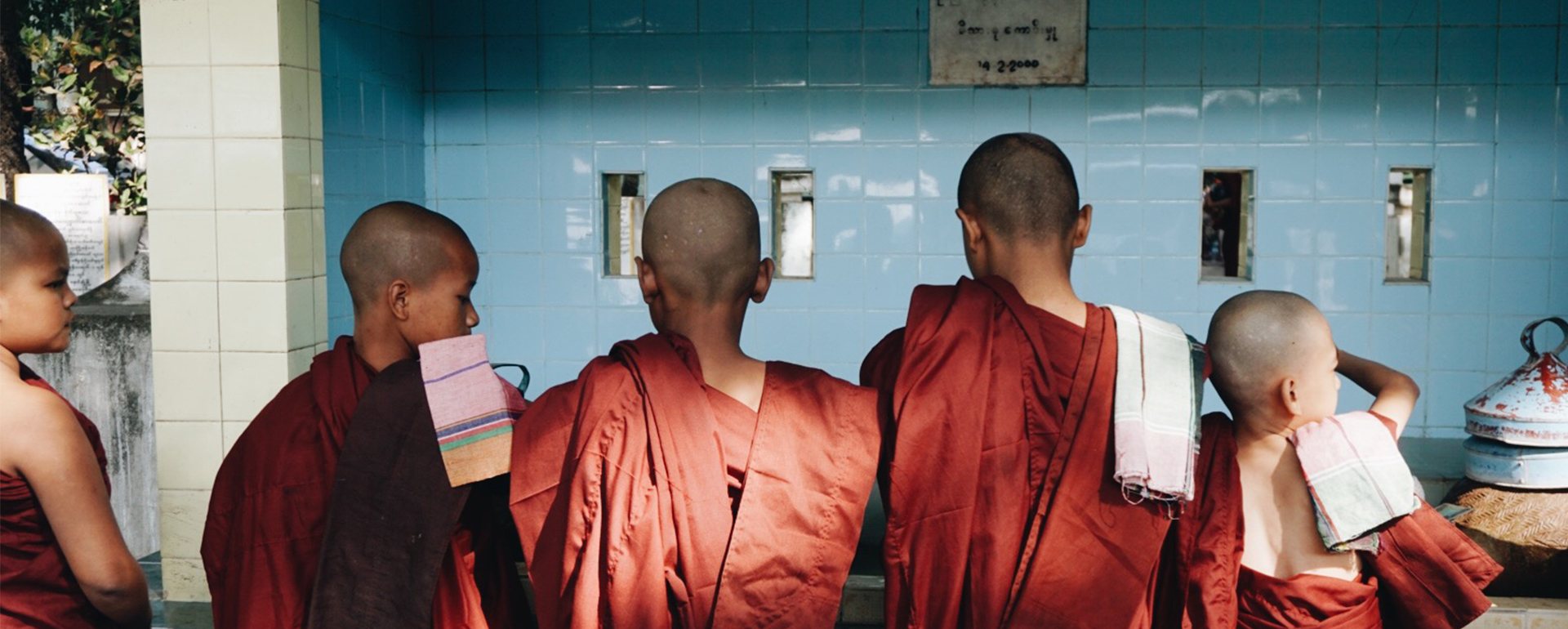
Mandalay is a really outstanding destination mainly because of what lies immediately around it: the ruins of much older cities and religious sites sit decaying in an antique landscape. Take a boat trip 10km up the Irrawaddy to Mingun, a village located on the western side, gliding past a timeless scene of bullocks ploughing a tapestry of fields on our way, to see the remains of a massive, half-built pagoda abandoned in 1819. During the trip you’ll be able to visit the Settawya Pagoda, known for being the home of Buddha’s handprint enmeshed into marble, as well as the Temple of Pondawyapaya which is located near the river. Next up is Pahtodawgyi, a temple which was destroyed by an earthquake and was also left unfinished. Mingun is also home to one of the heaviest bells in the world, weighing more than 90 tons, and the Shinbume Pagoda, a temple built in 1816 by the nephew of king Bodawpaya in loving memory of one of his wives.
Back to Mandalay, a trip to the village of Ywataung is a must, as it is full of cute shops selling traditional little gifts you’ll be able to take home. The village is also known for its work on silverware.
From Mandalay take a plane to Heho, important city located in the Shan State, the largest state in Myanmar, renowned for its colorful markets, and especially its mix of tribal ethnicities.
Aside from the beauty of this most glittering jewel of Myanmar's eastern Shan region, from Heho, travel to Inle a thriving ecosystem, home to thousands who reside in floating villages. Resembling a rather rural Birman Venice, everyday life is lived and experienced floating ethereally on water. Locals move across homes using canoes and tend to their fruit and vegetable gardens on floating gardens held together by bamboo poles. The local tribe is that of the Inta, an ethnicity which can only be found in this area, especially known for their way of fishing and navigating the lake: standing at the stern they stand on one leg while with the other they hold the oar.
Lake Inle is also known for its cultivation of lotus flowers, which contain a special and very rare filament used to make pashminas. Italian brand Loro Piana is one of the only brands in the whole world who makes use of this precious technique to make lotus-flower pashminas. The lake is surrounded by Pagodas, so a visit to the most beautiful ones should be in books. We recommend visiting the Indein Pagoda, a building dating back the 8th century, made out of more than 1000 stupas, immersed in greenery and forgotten by humanity. The group of the Pagodas was built by the Pa-o tribal ethnicity, the seventh largest tribe in Myanmar. We recommend staying at the Sanctum Inle Resort, located close to the lake, this luxury hotel whose architecture is inspired by the arches and cloisters of the neighboring temples. The Resort is also home to a wonderful spa, in case you’d like to switch off after a long day walking around.
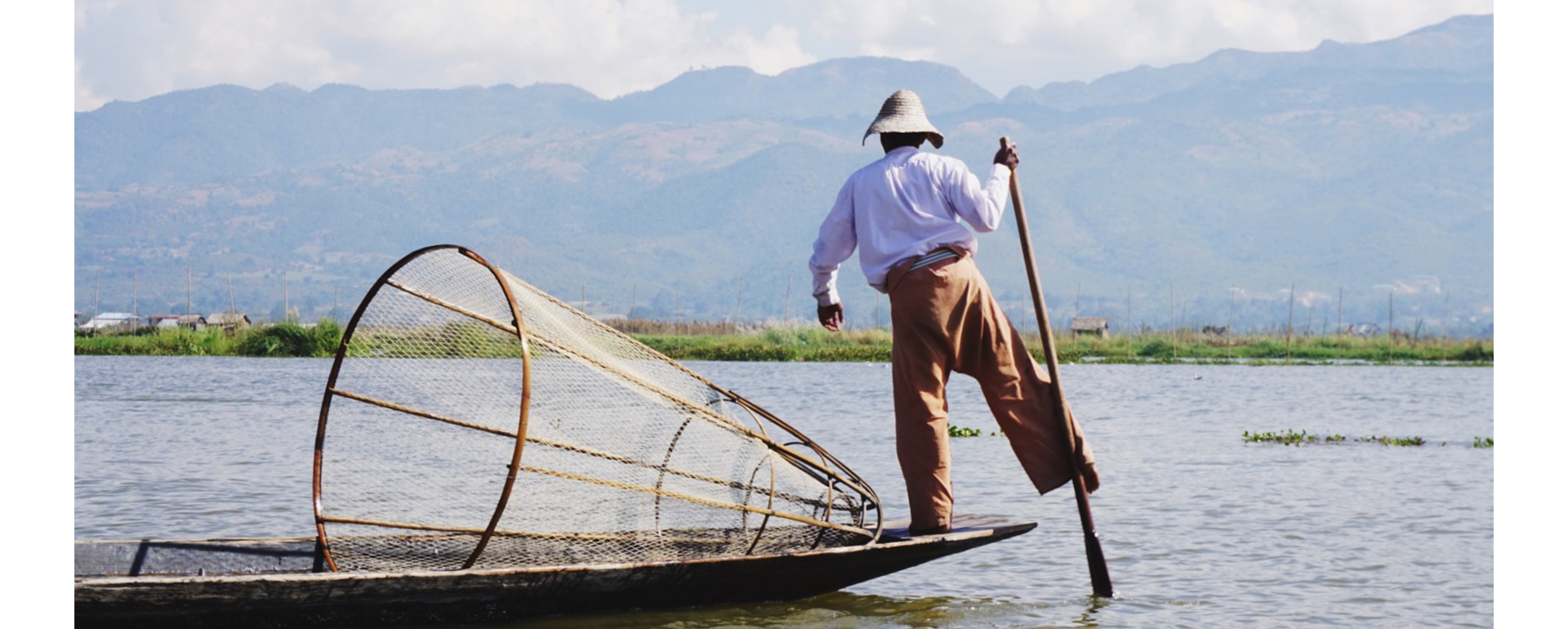
The remote and sleepy capital of Kayah, Myanmar’s smallest – and one of its least visited – states, Loikaw is a long way from anywhere. Over half a day's travel by bus from Yangon or Mandalay, although there are regular flights from Yangon now, it is possible to travel over land from the closer-by Inle Lake. On your boating trip to Loikaw though, stop by the villages of Sagar and Tagaung. Sagar is a ruined royal capital with ancient monasteries and pagodas at the southern end of Inle Lake. It is asserted by tradition that this town is the cradle of Myanmar civilization. There are unique Mudra style statues of Buddhas in Sagar, which were made from fine workmanship of an ancient era. From here, it will take six hours to get to Loikaw. On arrival, a visit to the Taung Kwe Zedi Pagoda is a must. The pagoda is the most famous religious landmark of Loikaw and is located on a hillock called Thirimingalar, where you’ll be able to admire a beautiful panorama. We suggest staying at the Kayah Resort, which will guarantee a relaxing immersed in nature.
For your final days in Myanmar, we suggest visiting the Padaung tribal ethnicity in their village of Panpae. The Padaung tribe is famous because of the tradition these women have of wearing brass rings along their neck, which make the neck seem longer. According to a legend, women wore the rings to protect themselves from tiger attacks. Padaung women are also called ‘giraffe women’ and start their transformation into a giraffe woman from the early age of 5 years old. That’s when the first ring is worn by young girls and every two years another one is added. Their neck thus begins to deform, there is a slippage of the clavicle and the chest starts compressing. The neck seems to take a length of 25-30 cm. The Padaung tribe is the most famous and easiest to reach of the still existing tribes in Myanmar, however, if you have the chance and time a series of companies organize a major jumping-off point for treks into Shan state villages, through jungle-clad hills and clementine groves in the east, where you’ll be able to meet other very different and very particular tribes which live in another time, and are slowly becoming extinct.
From here you’ll be taking a flight back to Yangon, where you can stay a night and wait for your international flight back home.